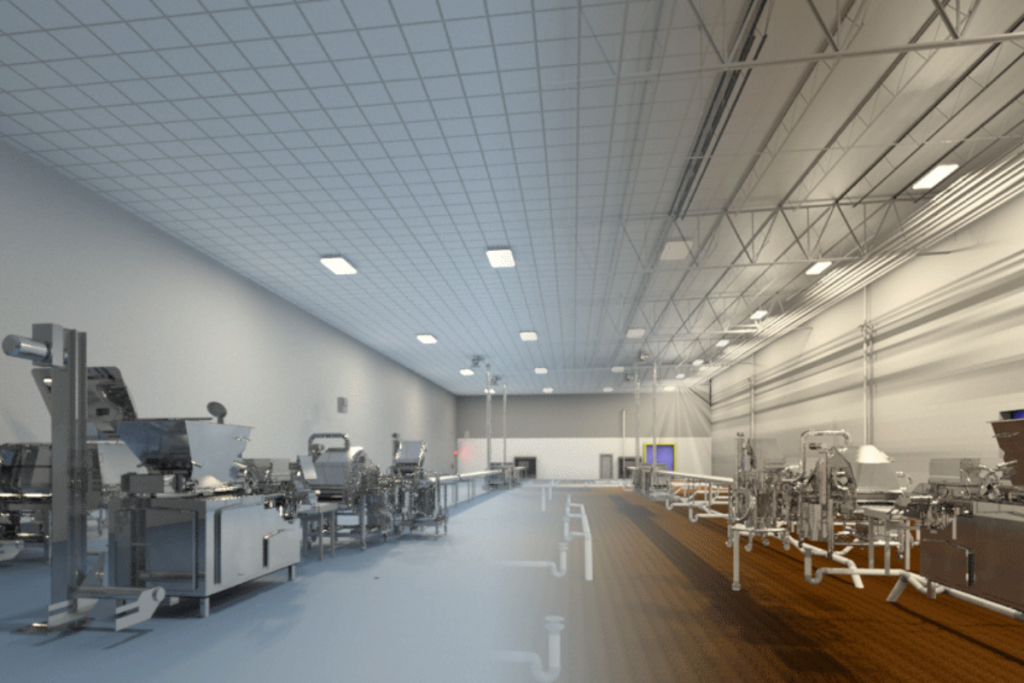A sustainable revolution is underway and industrial/commercial buildings in the U.S. are lagging behind. Almost a quarter of U.S. greenhouse gas emissions come directly from industrial sources, such as manufacturing, food processing, mining and construction, according to the Center for Climate and Energy Solutions (C2ES).
“If direct and indirect emissions are combined, the industrial sector is the largest emitting sector in the U.S. economy, responsible for 29.6% of total emissions,” according to data provided by C2ES.
While you may be familiar with Building Information Modeling (BIM), it’s often underestimated and pigeonholed as merely a design and construction tool. However, when implemented strategically, BIM is the key to turning industrial facilities into long-term sustainability powerhouses and providing transparency and a sense of order to what has historically been a nebulous process.
A building’s design, construction and operation produce data that comprise a complex puzzle — BIM helps solve it.
What is Building Information Modeling (BIM)?
With its conceptual roots dating back to the 1970s, BIM is not in its infancy. Yet the technology stands at the precipice of rapid change, expanding capabilities and widespread adoption.
In the creation of a computer-generated BIM model, BIM software integrates numerous layers of information from a number of infrastructure systems into a master model. It is, in essence, the virtualization of an entire facility from the ground up and through the project’s lifecycle. BIM models are composed of intelligent objects (metadata) that are updated as they are altered throughout the design process, regardless of who is working on them. This enables every A/E professional to be aware of all design updates on a nearly live basis.
Investing in BIM improves cost-effectiveness and collaboration
According to a recent study, BIM can improve construction efficiency, and enhance collaboration and knowledge sharing among all project team members. The technology also supports pre-construction, construction, and building operations and maintenance-related tasks. Further, BIM reduces risk throughout a project in the following ways:
- Enables all aspects of construction — such as cost estimating, construction sequencing and scheduling — to be visualized and managed with greater efficiency.
- Minimizes costly errors or misinterpretations between designers, engineers and contractors
- Requires collaboration and knowledge sharing between all stakeholders, ensuring accuracy and reliability while expediting the design-build process
- Enables efficient collaboration of project team members located anywhere in the world since the BIM model can be accessed via cloud technology
- Clients can do virtual walk-throughs of the designed space to ensure their expectations and requirements are satisfied before construction even begins
- Metadata embedded in each BIM model allow building owners to operate and maintain their facilities throughout the building’s lifecycle via asset management
These benefits are just the tip of the iceberg. Where computer science has Moore’s Law pushing boundaries, AEC has BIM, which is demonstrating uses far beyond its initial imagined scope, including combining the technology with augmented reality (AR), virtual reality (VR), 3D printing and BIM-enabled building automation and robotics.
In other words, BIM is the future of the AEC industry, with countless applications that can be harnessed by companies today, particularly with regard to sustainable construction.
BIM and sustainable construction
“The industrial sector uses more delivered energy than any other end-use sector, consuming about 54% of the world’s total delivered energy,” according to the U.S. Energy Information Association. While there has been notable progress in energy efficiency for decades, findings show that building energy consumption is increasing across sectors.
This is where BIM can shine in unexpected ways: It offers actionable data that can guide the design-build process and optimize sustainability.
BIM allows builders and owners to analyze different iterations of a proposed facility’s conceptual model before approving the final design.
Consider these four ways BIM can be utilized to maximize sustainability on a project:
- Increased energy efficiency — BIM maximizes energy efficiency by allowing designers to foresee potential opportunities and issues. This includes innovations like solar studies, which assess how much energy the building will require for heating and cooling in regard to its orientation of the sun, and energy savings if, for example, the building were rotated 90 degrees. Also, BIM can establish how the new facility might affect neighboring buildings (creating shadows) and calculate energy consumption based on the building’s shape, size and volume.
- Material selection — BIM can help identify the best-suited materials for a certain project, including specifications that can lower environmental impact by integrating BIM with a modified search algorithm and supplier performance rating. Cost and environmental comparisons can then be generated based on different material combinations and building designs.
- Waste reduction — Streamlining construction minimizes opportunities to squander resources by ensuring that everyone knows where the materials should be for that specific section of the project. This insulates against unnecessary moving, handling and potential loss of supplies. Carbon emissions, as well as environmental impacts to the surrounding site can also be calculated.
- Track long-term operational energy usage — BIM can assess and track the energy use of a building in real time, which helps identify inefficient systems and weak points such as heating, cooling and energy consumption “hot spots.” BIM’s ability to predict long-term costs enables clients to compare and select the most sustainable engineering system product packages.
BIM’s underutilized power lies in the data embedded in every object within the puzzle of a building’s design. Every puzzle piece and every shift to the puzzle is seen and understood across disciplines, streamlining the design-build process and providing a wealth of knowledge about a project before finalizing design, during construction and throughout the lifetime operation of the building.
BIM simplifies and streamlines projects by minimizing — if not eliminating — surprises from inception to completion. The technology induces order from disorder and facilitates timely and accurate design and construction: transparent completion of the puzzle, with no missing pieces.
Ready to reap the benefits of BIM at your facility? Have questions on where to go from here? Comment below or email me at foodforthought@stellar.net



